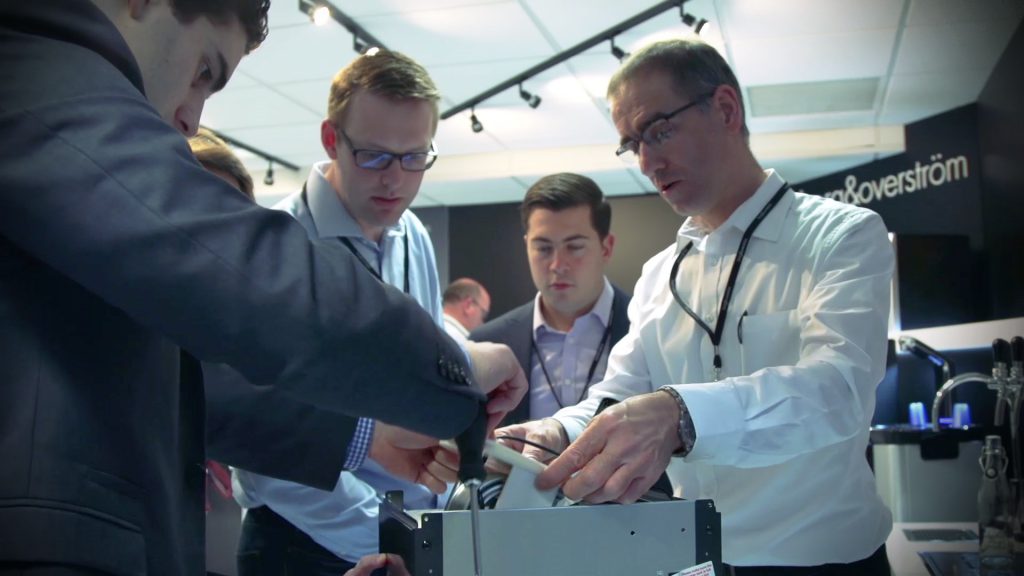Guide to filtration: Guaranteed fresh tasting water from your dispenser

The only way to guarantee refreshing, great tasting, water for your customers is to use a filtered water dispenser.
It is safe to plumb a water dispenser, without a filter, into a treated mains water supply and enjoy ambient, hot, cold or sparkling water. But you won’t be able to guarantee consistently great tasting and odourless water.
Filtration creates what Peter Dunham, one of our experts, describes as ‘polished’ water. He likens filtration to driving a ‘reasonably-priced’ car when you have the option of driving a Bentley. “Both will take you from A to B, but one will get you there in more style, comfort and enjoyment.”
Different types of filtration result in varying levels of “polish” on the dispensed water. Which filter you choose for your water dispenser, explains Peter, depends on where you live and the quality of water your customers expect.
Filtration options for your water dispenser
Carbon Filtration: Carbon removes suspended particles, or ‘light’ contaminants, that may have got into the water supply between the water being treated and dispensed. Importantly, it absorbs unpleasant chlorine particles, but doesn’t remove the minerals that give water its pleasant taste.
Carbon filters typically remove particles from around 50 microns to 0.5 of a micron in size. The industry norm is 1.0 micron. If you opt for filtration at 0.5 of a micron be careful where you source your filters from. At this level of filtration your filter is required to work harder, which can reduce its service life and slow down the flow of water, impacting the performance of your water dispenser.
All Borg & Overström product ranges can be fitted with carbon filters. We use filters made by 3M, a science and tech innovation company, because they are well-made, small and effective over a longer period of time. 3M’s 0.5 micron filters are guaranteed to last as long as their 1.0 filters and do not slow the water down.
A carbon filter is adequate if you live in the UK and much of Europe, where we are lucky enough to enjoy safe drinking water straight from the tap.
Carbon filtration plus Polyphosphate: If you live in a hard water area you may want to opt for a carbon filter with a Polyphosphate additive. Hard water can be particularly frustrating when using water dispensers. Scale not only restricts the flow of water but can also reduce the service life of dispensers. Carbon filters with polyphosphate are ideal for reducing the build-up of scale in your machine.
UV filtration: UV is not strictly a filtration method, but it is often used in combination with carbon filters. This is where water being passed through a chamber is exposed to specific wavelengths that kill remaining bacteria before it is dispensed.
In all Borg & Overström ranges the minimal amount of water is kept inside the machine, which significantly reduces the risk of bacteria building up in the water. The addition of ViovandtTM, our UV purifying system, also gives customers further reassurance that the water is safe to drink.
Membrane filtration: In this type of filtration water is passed through a fine membrane rather than a carbon block (although it is normally used in conjunction with a carbon filter). Membrane filtration removes particles as small as 0.1 of a micron. In most cases, a carbon filter is adequate but there are some instances where a membrane is more suitable.
For example, some parts of the UK still have challenges with their water supply, such as Wales or Cumbria. A membrane offers more peace of mind than just a carbon filter where there is a higher risk of harmful bacteria entering the water supply.
Reverse Osmosis (RO): This is the platinum standard of filtration. Without getting too technical, RO uses a semipermeable membrane to remove ions, molecules and larger particles from water. In countries where the tap water isn’t drinking quality RO is used to make it safe to drink.
The downsides of RO, and why you don’t want to include it if you don’t need to, is that it removes many of the minerals which give water it’s refreshing taste. A water dispenser with RO filtration must also be permanently attached to a waste water pipe and for every gallon of clean water 4 to 8 gallons is wasted.
RO is rarely needed in countries where the tap water is already safe to drink. In the UK or Europe, you most commonly see water dispensers fitted with RO filtration in health settings. It’s usually not needed in settings such as workplaces, gyms etc.
